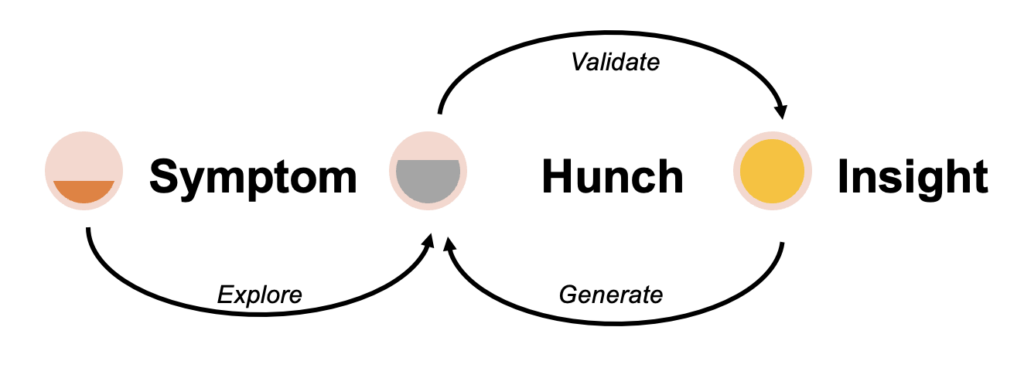In this first of a multi-part series about CIC’s Deep Insights Process, Managing Partner Carlo Cuesta introduces a powerful approach to scaling your work and achieving lasting success.

A theater notices a symptom: attendance is declining. They know many of their patrons are seniors, so their hunch is that it might be that the curtain time is too late. Five different audience members have mentioned they’d like the shows to start earlier, so they assume that must be it. They change curtain time to 7:30, but patrons still aren’t coming. But once they gather evidence by surveying their patrons, they discover something that they had never even considered: the seats are old and uncomfortable and patrons don’t have enough time to use the restroom during intermission. What they thought was the curtain time is something else entirely. They discovered what we call a deep insight.

This process of discovering deep insights can be a powerful approach to unlocking your organization’s full potential. A deep insight is a significant realization that emerges from analyzing data, exploring assumptions, pursuing certainty, and acknowledging uncertainty. It involves tapping into the shared thinking and creativity of your stakeholders and your community, listening to their perceptions and lived experiences, and uncovering hidden patterns and opportunities that challenge conventional wisdom and drive innovation or change.
Many successful organizations aspire to grow their impact to create even more meaningful change in their communities. However, they often find that the skills, capabilities, and techniques that got them to a successful level of impact are not sufficient to scale their work to the next level. You can’t keep doing what you’re doing and expect substantial change.
When leaders tell us they want to scale their work, it’s often code for “We want to do more of what we’re already doing but also have a bigger impact.” We get it. Organizations invest substantial money, time, and people in their processes. But the work of discovering deep insights does not diminish the work you’ve already done or the successes you’ve achieved. The reality is, you have to be willing to pivot from the very comfy thing that’s not working and take a leap into the unknown. Organizations have to create new capabilities in order to grow.
“You can’t keep doing what you’re doing and expect substantial change…you have to be willing to pivot from the very comfy thing that’s not working and take a leap into the unknown.”
Carlo M. Cuesta — Managing Partner, Creation In Common
The deep insights process helps to spur new ways of thinking which serve as a foundation for building new capabilities that don’t exist in your current state. Part of that is being willing to shift your mindset about what you do, who you are, and how you’re perceived. Then it requires you to take that work and apply it to positioning resources — people, time, expertise, money — differently than you’ve ever done before.
This process takes some brutally honest self-reflection. We’ve heard organization leaders say, “Wait a second…we’re successful! Look at how good our work is. You’re telling me this level of quality and success isn’t going to get us there?” I’d venture to say it’s actually harder for successful organizations to do the work of discovering deep insights than it is for an organization that’s struggling. Because as a successful organization, you’ve built all this expertise, you’ve made all of these investments. And now to be able to grow you have to open yourselves up to new possibilities to achieve that next level. That can be really difficult. You may have to build models, tear them down, and build new models to better understand what your community needs.
Organizations have a tendency to look for the silver bullets. We often try to simplify a problem, or paint it with a broad brush. We want certainty so that we can make a great decision: problem/solution. So we quickly search for information that confirms our assumptions. But by expediting the search for a solution we lose the nuance and the actual true learnings that allow us to create an integrated strategy. You have to sit with a problem to get to the truth.
Pursuing certainty is a good thing. But you have to support that pursuit with data analysis, self-reflection, and consensus-building. Organizations that are open to discovering deep insights and embrace a culture of learning are better positioned to grow their impact, effect meaningful change, and truly achieve lasting success.





 Follow @cmcuesta
Follow @cmcuesta